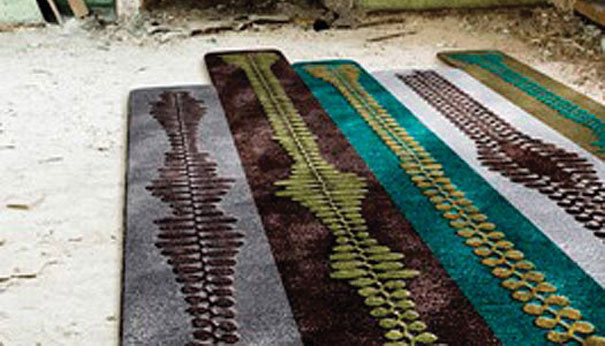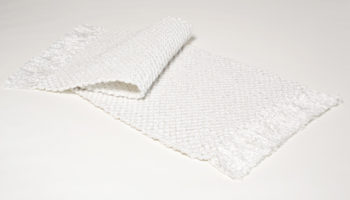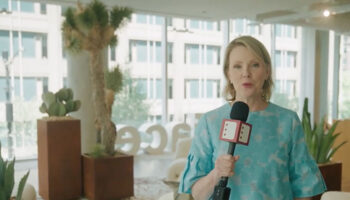The Advantages of going (sea) Green: Patricia Urquiola’s Cintas Carpet
On the subject of fortuitous Fridays, see today’s companion post on Karim Rashid’s Trex Lighting, then check back here for other eerie similarities between Rashid and Spain’s hard-working Patricia Urquiola. Like Rashid’s alienesque, phosphorescent new wall lamp, Trex, Urquiola’s alluring and unusual Cintas Carpet for Chevalier Edition evokes life from the netherworld–in this case, that’s some forty fathoms down to the darker than darkness of the deep deep sea… breeding grounds for the unusual and unusually beautiful Micrasterias Algae on which Cintas is based.
Cintas Carpet. Designed by Patricia Urquiola for Chevalier Edition.
Upon further investigation I must admit that I’ve exaggerated Micrasterias for effect. In truth, the prolific Green Algae “occur in all types of freshwater habitats around the world, usually in acid bogs or lakes.. they thrive in waters that are deficient in nutrients, which is being threatened in many areas because of fertilizer run-off from residential and agricultural areas.”
All of which makes Cintas an odd kind of environmental statement, since it acknowledges that even pollution can facilitate propagation of some astoundingly beautiful life forms. Micrasterias is microscopic, so the backlit images one sees on the web–which resemble a wondrous phosphorescent life form that might emerge from the deepest recesses of James Cameron’s imagination–are decidedly unreal. Urquiola’s translation into textile form is thus an inspired act of creative appropriation, that–in addition to “breaking away from the traditional rectangular shape used for rugs”–speculates on how these bi-symmetrical, single-celled organisms can encourage us to imagine new forms.
On the subject of rugs that break out of the box, only Ron Arad’s Do-Lo-Rez bears comparison with Cintas. Chalk that deficiency up to Urqiola’s penchant for unconventional inspiration–her work on such pieces as the Log Sofa, The Bohemian Collection, and Canasta evinces a bold willingness to apply new shapes and forms to conventional concepts (not to mention her Digitable Table, which, coincidentally, would go beautifully with Do-Lo-Rez).
In regard to Cintas, the formula works because it expands our notion of what a rug should be, yet still results in a quite workable piece of design. The rug has the kind of tactile and sensual appeal that characterizes great work, but don’t let the high-concept/artistic quotient scare you away. As with everything she does, Urquiola’s Cintas is above all a highly-functional, hard-working addition: “an island to stretch out upon, rather than a work of art… part of everyday living without any formal notes.”
Via MocoLoco.





Leave a Reply